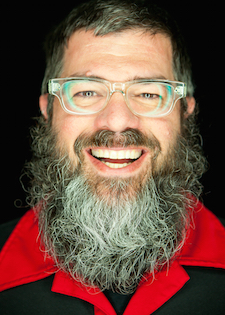This post is part of a blog series on Pomomusings, discussing pastoral identity. To read about the series, as well as get a full schedule of participants, click here.

Through the Lens of Belonging
As a lifelong youth worker, I have wrestled with framing my understanding of adolescence both in response to research and those who know much more than I do, while still being critical and not simply acquiescing to damaging and biased cultural opinions of teenagers. As a result, I’ve rejected the assumption, held by most, that the teenage years are necessarily a time of ‘storm and stress’ (a phrase used by a dude to describe adolescence back in 1904), unavoidably marked by rebellion, moodiness, volatility, and a host of other negative descriptors.
Instead, I think of adolescence as an overlay of two realities—new cognitive capacity and cultural permission—providing space for the working out of three interwoven tasks. Those are: Identity (“Who am I?â€), Autonomy (“How do my choices matter?â€), and Affinity (“To whom and where do I belong?â€). I believe that the teenage years are the white-hot stage of these tasks.
But those three tasks are not limited to teenagers.
As an adult, I continue to periodically wrestle with those same questions. And as a person in ministry (and all that entails and implies), the working out of those tasks, as we all must do from time to time (particularly when we experience change), gets awkward.
Because we live very public lives. At least we should. We’re either somewhat authentic and, therefore, public; or we’re private and limiting our relational connection and impact. It’s tough to think of another profession that calls for life in a fishbowl to the same extent. Maybe POTUS.
Here’s what I find (both from my own experience, and from watching the lives of the professional youth workers in my year-long coaching program): Pastors are notoriously bad at separating “who I am†from “what I do.â€
On one hand, those two are somewhat inseparable. There’s no denying that what I do and who I am are intertwined, informing each other and cuddling. Let’s say they’re spooning, even.
But if “who I am†and “what I do†are one-and-the-same, I’m in trouble. And, frankly, so is whatever ministry I’m a part of.
One of the points I make when I teach on these adolescent tasks is that today’s teenagers use the Affinity task as a lens through which they view (and work out) the other two. In other words: “to whom and where I belong†will give me insight into “how my choices matter†and “who I am.†(This, by the way, is a major shift from previous epochs of youth culture, when the other tasks were the lenses.)
As I think about my own identity, as a minister, maybe I should consider that adolescent lens as not such a bad thing. After all: if I have a healthy and honest (and theologically informed) understanding of my belonging to Christ and to the community of Christ, that could be pretty helpful in developing a healthy identity spooning with “what I do,†but not inverse-twinning into one thing.
Through that lens, “who I am†starts to take on distinct hues of “I am one who is following Christ, now, and through death and resurrection.†And “who I am†starts to take on shades of “I am one part of the body, the bride. I might have a different role; but I exist in authentic relationship with a community.â€
Honestly, that sounds SO much better, so much more life-giving, than an identity merely formed by what I do.
Mark Oestreicher (Marko) is a veteran youth worker and founding partner in The Youth Cartel, providing resources, training and coaching for church youth workers.  The author of dozens of books, including Youth Ministry 3.0, and the new release Hopecasting: Finding, Keeping and Sharing the Things Unseen. Marko is a sought after speaker, writer and consultant. Marko lives in San Diego with his wife Jeannie and young adult and teenage children, Riley and Max. Marko’s blog is here.